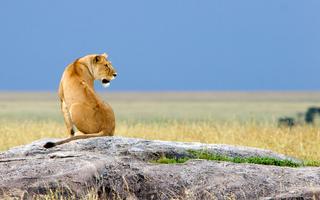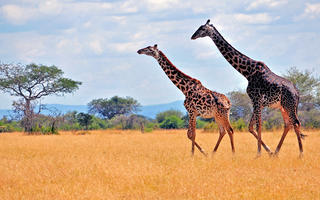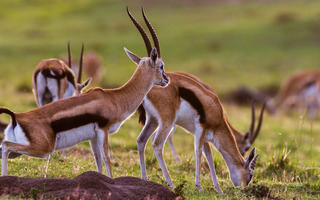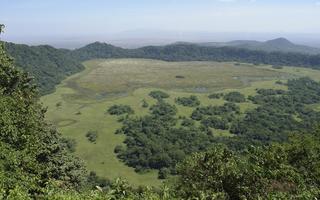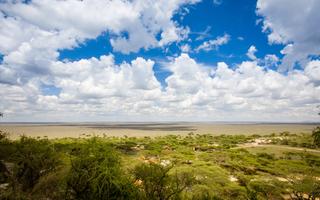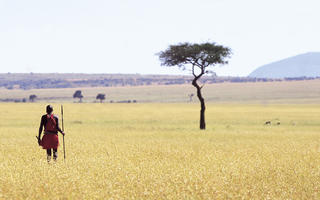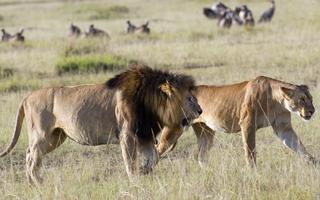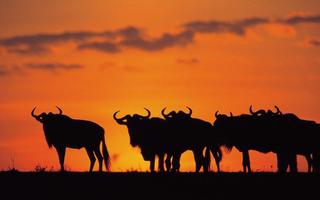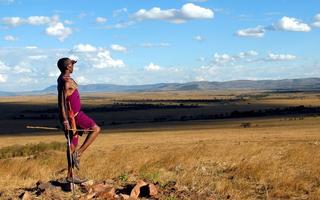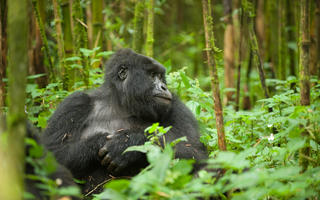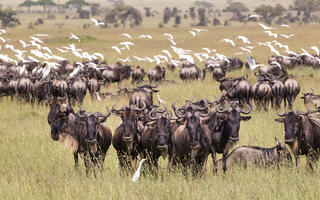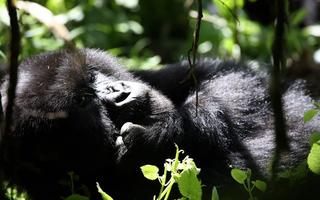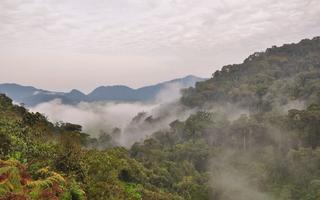| Name |
Chapter |
Category |
Destinations |
Countries |
Duration |
Itinerary |
| THE PERFECT SAFARI TRIO |
SOUTH AFRICA - We have four distinct seasons—summer, fall, winter, and spring—only they are flipped from the seasons in the Northern Hemisphere. South Africa has a lovely temperate climate with hot summers and mild winters. Winter (May to August) Across South Africa’s reserves, winter signals the dry season and the best time to go on safari. Days are mild with plenty of sunshine, however, temperatures often drop in the early mornings and late afternoons – so pack a warm jacket. If you’re spending time in Cape Town, you may see some rain in between the crisp, cool winter days. Summer (October to March) Cape Town is best in the summer months of October to March. Temperatures can get well into the 30° Celsius range (perfect beach weather!). Summer is the dry season in Cape Town, however, it is the wet season in South Africa’s reserves. Summer rains usually come down in short afternoon thunderstorms, and the landscapes turn lush and green. |
|
Timbavati Private Nature Reserve, Makuleke Contractual Park, Marakele National Park |
South Africa |
10 days |
view
|
| Essential South Africa |
SOUTH AFRICA - We have four distinct seasons—summer, fall, winter, and spring—only they are flipped from the seasons in the Northern Hemisphere. South Africa has a lovely temperate climate with hot summers and mild winters. Winter (May to August) Across South Africa’s reserves, winter signals the dry season and the best time to go on safari. Days are mild with plenty of sunshine, however, temperatures often drop in the early mornings and late afternoons – so pack a warm jacket. If you’re spending time in Cape Town, you may see some rain in between the crisp, cool winter days. Summer (October to March) Cape Town is best in the summer months of October to March. Temperatures can get well into the 30° Celsius range (perfect beach weather!). Summer is the dry season in Cape Town, however, it is the wet season in South Africa’s reserves. Summer rains usually come down in short afternoon thunderstorms, and the landscapes turn lush and green. |
|
Cape Town, Franschhoek, Timbavati Private Nature Reserve |
South Africa |
9 days |
view
|
| Experience South Africa |
SOUTH AFRICA - We have four distinct seasons—summer, fall, winter, and spring—only they are flipped from the seasons in the Northern Hemisphere. South Africa has a lovely temperate climate with hot summers and mild winters. Winter (May to August) Across South Africa’s reserves, winter signals the dry season and the best time to go on safari. Days are mild with plenty of sunshine, however, temperatures often drop in the early mornings and late afternoons – so pack a warm jacket. If you’re spending time in Cape Town, you may see some rain in between the crisp, cool winter days. Summer (October to March) Cape Town is best in the summer months of October to March. Temperatures can get well into the 30° Celsius range (perfect beach weather!). Summer is the dry season in Cape Town, however, it is the wet season in South Africa’s reserves. Summer rains usually come down in short afternoon thunderstorms, and the landscapes turn lush and green. |
|
Johannesburg, Sabi Sand Nature Reserve, Cape Town, De Kelders, Franschhoek, Shamwari Private Game Reserve |
South Africa |
14 days |
view
|
| Family Adventure in South Africa |
SOUTH AFRICA - We have four distinct seasons—summer, fall, winter, and spring—only they are flipped from the seasons in the Northern Hemisphere. South Africa has a lovely temperate climate with hot summers and mild winters. Winter (May to August) Across South Africa’s reserves, winter signals the dry season and the best time to go on safari. Days are mild with plenty of sunshine, however, temperatures often drop in the early mornings and late afternoons – so pack a warm jacket. If you’re spending time in Cape Town, you may see some rain in between the crisp, cool winter days. Summer (October to March) Cape Town is best in the summer months of October to March. Temperatures can get well into the 30° Celsius range (perfect beach weather!). Summer is the dry season in Cape Town, however, it is the wet season in South Africa’s reserves. Summer rains usually come down in short afternoon thunderstorms, and the landscapes turn lush and green. |
|
Cape Town, Hermanus, Stellenbosch, Madikwe Game Reserve |
South Africa |
12 days |
view
|
| South Africa Adventure |
SOUTH AFRICA - We have four distinct seasons—summer, fall, winter, and spring—only they are flipped from the seasons in the Northern Hemisphere. South Africa has a lovely temperate climate with hot summers and mild winters. Winter (May to August) Across South Africa’s reserves, winter signals the dry season and the best time to go on safari. Days are mild with plenty of sunshine, however, temperatures often drop in the early mornings and late afternoons – so pack a warm jacket. If you’re spending time in Cape Town, you may see some rain in between the crisp, cool winter days. Summer (October to March) Cape Town is best in the summer months of October to March. Temperatures can get well into the 30° Celsius range (perfect beach weather!). Summer is the dry season in Cape Town, however, it is the wet season in South Africa’s reserves. Summer rains usually come down in short afternoon thunderstorms, and the landscapes turn lush and green. |
|
Cape Town, Oudtshoorn, Knysna, Gqeberha, Addo Elephant National Park, Johannesburg |
South Africa |
14 days |
view
|
| South Africa City & Safari |
SOUTH AFRICA - We have four distinct seasons—summer, fall, winter, and spring—only they are flipped from the seasons in the Northern Hemisphere. South Africa has a lovely temperate climate with hot summers and mild winters. Winter (May to August) Across South Africa’s reserves, winter signals the dry season and the best time to go on safari. Days are mild with plenty of sunshine, however, temperatures often drop in the early mornings and late afternoons – so pack a warm jacket. If you’re spending time in Cape Town, you may see some rain in between the crisp, cool winter days. Summer (October to March) Cape Town is best in the summer months of October to March. Temperatures can get well into the 30° Celsius range (perfect beach weather!). Summer is the dry season in Cape Town, however, it is the wet season in South Africa’s reserves. Summer rains usually come down in short afternoon thunderstorms, and the landscapes turn lush and green. |
|
Cape Town, Timbavati Private Nature Reserve, Sabi Sand Nature Reserve |
South Africa |
11 days |
view
|
| South Africa Luxury Safari |
SOUTH AFRICA - We have four distinct seasons—summer, fall, winter, and spring—only they are flipped from the seasons in the Northern Hemisphere. South Africa has a lovely temperate climate with hot summers and mild winters. Winter (May to August) Across South Africa’s reserves, winter signals the dry season and the best time to go on safari. Days are mild with plenty of sunshine, however, temperatures often drop in the early mornings and late afternoons – so pack a warm jacket. If you’re spending time in Cape Town, you may see some rain in between the crisp, cool winter days. Summer (October to March) Cape Town is best in the summer months of October to March. Temperatures can get well into the 30° Celsius range (perfect beach weather!). Summer is the dry season in Cape Town, however, it is the wet season in South Africa’s reserves. Summer rains usually come down in short afternoon thunderstorms, and the landscapes turn lush and green. |
|
Cape Town, Stellenbosch, Tswalu, Hoedspruit |
South Africa |
11 days |
view
|
| 16-Day Best of South Africa |
SOUTH AFRICA - We have four distinct seasons—summer, fall, winter, and spring—only they are flipped from the seasons in the Northern Hemisphere. South Africa has a lovely temperate climate with hot summers and mild winters. Winter (May to August) Across South Africa’s reserves, winter signals the dry season and the best time to go on safari. Days are mild with plenty of sunshine, however, temperatures often drop in the early mornings and late afternoons – so pack a warm jacket. If you’re spending time in Cape Town, you may see some rain in between the crisp, cool winter days. Summer (October to March) Cape Town is best in the summer months of October to March. Temperatures can get well into the 30° Celsius range (perfect beach weather!). Summer is the dry season in Cape Town, however, it is the wet season in South Africa’s reserves. Summer rains usually come down in short afternoon thunderstorms, and the landscapes turn lush and green. |
|
Cape Town, De Kelders, Franschhoek, Kwandwe Private Game Reserve, Johannesburg, Sabi Sand Nature Reserve |
South Africa |
16 days |
view
|
| City, Coastal, Winelands & Safari - Foundation itinerary |
SOUTH AFRICA - We have four distinct seasons—summer, fall, winter, and spring—only they are flipped from the seasons in the Northern Hemisphere. South Africa has a lovely temperate climate with hot summers and mild winters. Winter (May to August) Across South Africa’s reserves, winter signals the dry season and the best time to go on safari. Days are mild with plenty of sunshine, however, temperatures often drop in the early mornings and late afternoons – so pack a warm jacket. If you’re spending time in Cape Town, you may see some rain in between the crisp, cool winter days. Summer (October to March) Cape Town is best in the summer months of October to March. Temperatures can get well into the 30° Celsius range (perfect beach weather!). Summer is the dry season in Cape Town, however, it is the wet season in South Africa’s reserves. Summer rains usually come down in short afternoon thunderstorms, and the landscapes turn lush and green. |
|
Cape Town, Hermanus, Franschhoek, Thornybush Game Reserve |
South Africa |
11 days |
view
|
| Botswana Wet & Wild |
BOTSWANA - During the dry winter season months between May and October, the bush is at its thinnest and the animals head towards the rivers and the Okavango Delta. The dry winter months are also the most comfortable time to visit as the days are warm and nights are cool, the rains have passed and there are less mosquitos. |
|
Ng12 Concession, Khwai Private Reserve |
Botswana |
7 days |
view
|
| A Spot of Romance |
BOTSWANA - During the dry winter season months between May and October, the bush is at its thinnest and the animals head towards the rivers and the Okavango Delta. The dry winter months are also the most comfortable time to visit as the days are warm and nights are cool, the rains have passed and there are less mosquitos. |
|
Khwai Private Reserve, Makgadikgadi Salt Pans |
Botswana |
7 days |
view
|
| A Kubu Island Adventure |
BOTSWANA - During the dry winter season months between May and October, the bush is at its thinnest and the animals head towards the rivers and the Okavango Delta. The dry winter months are also the most comfortable time to visit as the days are warm and nights are cool, the rains have passed and there are less mosquitos. |
|
Makgadikgadi Salt Pans, Gweta |
Botswana |
7 days |
view
|
| Horse Riding Family Safari on the Makgadikgadi Salt Pans |
BOTSWANA - During the dry winter season months between May and October, the bush is at its thinnest and the animals head towards the rivers and the Okavango Delta. The dry winter months are also the most comfortable time to visit as the days are warm and nights are cool, the rains have passed and there are less mosquitos. |
|
Makgadikgadi Salt Pans, Makgadikgadi Pans National Park |
Botswana |
6 days |
view
|
| TIMELESS CHOBE AND DELTA SAFARI - BOTSWANA |
BOTSWANA - During the dry winter season months between May and October, the bush is at its thinnest and the animals head towards the rivers and the Okavango Delta. The dry winter months are also the most comfortable time to visit as the days are warm and nights are cool, the rains have passed and there are less mosquitos. |
|
Chobe National Park, Okavango Delta |
Botswana |
8 days |
view
|
| Wilderness Safaris - Botswana |
BOTSWANA - During the dry winter season months between May and October, the bush is at its thinnest and the animals head towards the rivers and the Okavango Delta. The dry winter months are also the most comfortable time to visit as the days are warm and nights are cool, the rains have passed and there are less mosquitos. |
|
Central Kalahari Game Reserve, Kwedi Concession , Linyanti Concession |
Botswana |
10 days |
view
|
| BEST OF TANZANIA SAFARI |
East Africa KENYA - Summer The most popular months are January and February when the weather is hot and dry and the wildlife tends to congregate around waterholes. The Migration From June/ July to October the Migration takes place and it’s an extremely busy (and exciting!) time to visit. Winter/ Rainy season During the long rains from March to May travel isn’t recommended. TANZANIA - Summer The most popular months are January and February when the weather is hot and dry and the wildlife tends to congregate around waterholes. The Migration From June to October, the Migration takes place and it’s an extremely busy (and exciting!) time to visit. Rainy season During the long rains (March to May) travel isn’t recommended. RWANDA - Dry season(s) For gorilla trekking, we recommend travelling during one of Rwanda’s two dry seasons: mid-June to September or December to February. Rainy season(s) For chimpanzee trekking, the rainy season produces lush greenery so chimps move about less and are easier to track. The short rainy season – October and November – is great for birding and photography. Rains normally come down in short, heavy bursts. During the long rains – March to mid-June – gorilla trekking can be tough and muddy. UGANDA - Dry Seasons (mid-December to February / June to September) Gorillas can be seen at any time of year. However, since gorilla trekking tends to involve steep slopes and thick mud it is more comfortable to travel in one of Uganda’s two dry seasons. Remember that the gorillas do live in rainforest so conditions will still be humid and wet. And don’t forget your gaiters! |
|
The Kilimanjaro Golf and Wildlife Estate, Tarangire National Park, Karatu, Eastern Serengeti |
Tanzania |
9 days |
view
|
| Best of Kenya Safari |
East Africa KENYA - Summer The most popular months are January and February when the weather is hot and dry and the wildlife tends to congregate around waterholes. The Migration From June/ July to October the Migration takes place and it’s an extremely busy (and exciting!) time to visit. Winter/ Rainy season During the long rains from March to May travel isn’t recommended. TANZANIA - Summer The most popular months are January and February when the weather is hot and dry and the wildlife tends to congregate around waterholes. The Migration From June to October, the Migration takes place and it’s an extremely busy (and exciting!) time to visit. Rainy season During the long rains (March to May) travel isn’t recommended. RWANDA - Dry season(s) For gorilla trekking, we recommend travelling during one of Rwanda’s two dry seasons: mid-June to September or December to February. Rainy season(s) For chimpanzee trekking, the rainy season produces lush greenery so chimps move about less and are easier to track. The short rainy season – October and November – is great for birding and photography. Rains normally come down in short, heavy bursts. During the long rains – March to mid-June – gorilla trekking can be tough and muddy. UGANDA - Dry Seasons (mid-December to February / June to September) Gorillas can be seen at any time of year. However, since gorilla trekking tends to involve steep slopes and thick mud it is more comfortable to travel in one of Uganda’s two dry seasons. Remember that the gorillas do live in rainforest so conditions will still be humid and wet. And don’t forget your gaiters! |
|
Nairobi, Amboseli National Park, Loisaba Conservancy, Mara North Conservancy |
Kenya |
10 days |
view
|
| Rwanda Gorillas in the mist |
East Africa KENYA - Summer The most popular months are January and February when the weather is hot and dry and the wildlife tends to congregate around waterholes. The Migration From June/ July to October the Migration takes place and it’s an extremely busy (and exciting!) time to visit. Winter/ Rainy season During the long rains from March to May travel isn’t recommended. TANZANIA - Summer The most popular months are January and February when the weather is hot and dry and the wildlife tends to congregate around waterholes. The Migration From June to October, the Migration takes place and it’s an extremely busy (and exciting!) time to visit. Rainy season During the long rains (March to May) travel isn’t recommended. RWANDA - Dry season(s) For gorilla trekking, we recommend travelling during one of Rwanda’s two dry seasons: mid-June to September or December to February. Rainy season(s) For chimpanzee trekking, the rainy season produces lush greenery so chimps move about less and are easier to track. The short rainy season – October and November – is great for birding and photography. Rains normally come down in short, heavy bursts. During the long rains – March to mid-June – gorilla trekking can be tough and muddy. UGANDA - Dry Seasons (mid-December to February / June to September) Gorillas can be seen at any time of year. However, since gorilla trekking tends to involve steep slopes and thick mud it is more comfortable to travel in one of Uganda’s two dry seasons. Remember that the gorillas do live in rainforest so conditions will still be humid and wet. And don’t forget your gaiters! |
|
Kigali, Volcanoes National Park |
Rwanda |
4 days |
view
|
| Legendary Expeditions #4 |
East Africa KENYA - Summer The most popular months are January and February when the weather is hot and dry and the wildlife tends to congregate around waterholes. The Migration From June/ July to October the Migration takes place and it’s an extremely busy (and exciting!) time to visit. Winter/ Rainy season During the long rains from March to May travel isn’t recommended. TANZANIA - Summer The most popular months are January and February when the weather is hot and dry and the wildlife tends to congregate around waterholes. The Migration From June to October, the Migration takes place and it’s an extremely busy (and exciting!) time to visit. Rainy season During the long rains (March to May) travel isn’t recommended. RWANDA - Dry season(s) For gorilla trekking, we recommend travelling during one of Rwanda’s two dry seasons: mid-June to September or December to February. Rainy season(s) For chimpanzee trekking, the rainy season produces lush greenery so chimps move about less and are easier to track. The short rainy season – October and November – is great for birding and photography. Rains normally come down in short, heavy bursts. During the long rains – March to mid-June – gorilla trekking can be tough and muddy. UGANDA - Dry Seasons (mid-December to February / June to September) Gorillas can be seen at any time of year. However, since gorilla trekking tends to involve steep slopes and thick mud it is more comfortable to travel in one of Uganda’s two dry seasons. Remember that the gorillas do live in rainforest so conditions will still be humid and wet. And don’t forget your gaiters! |
|
Arusha, Chem Chem Concession, Mwiba Wildlife Reserve |
Tanzania |
8 days |
view
|
| Legendary Expeditions #3 |
East Africa KENYA - Summer The most popular months are January and February when the weather is hot and dry and the wildlife tends to congregate around waterholes. The Migration From June/ July to October the Migration takes place and it’s an extremely busy (and exciting!) time to visit. Winter/ Rainy season During the long rains from March to May travel isn’t recommended. TANZANIA - Summer The most popular months are January and February when the weather is hot and dry and the wildlife tends to congregate around waterholes. The Migration From June to October, the Migration takes place and it’s an extremely busy (and exciting!) time to visit. Rainy season During the long rains (March to May) travel isn’t recommended. RWANDA - Dry season(s) For gorilla trekking, we recommend travelling during one of Rwanda’s two dry seasons: mid-June to September or December to February. Rainy season(s) For chimpanzee trekking, the rainy season produces lush greenery so chimps move about less and are easier to track. The short rainy season – October and November – is great for birding and photography. Rains normally come down in short, heavy bursts. During the long rains – March to mid-June – gorilla trekking can be tough and muddy. UGANDA - Dry Seasons (mid-December to February / June to September) Gorillas can be seen at any time of year. However, since gorilla trekking tends to involve steep slopes and thick mud it is more comfortable to travel in one of Uganda’s two dry seasons. Remember that the gorillas do live in rainforest so conditions will still be humid and wet. And don’t forget your gaiters! |
|
Arusha, Chem Chem Concession, Mwiba Wildlife Reserve, Singita Serengeti Grumeti |
Tanzania |
10 days |
view
|
| Legendary Expeditions #2 |
East Africa KENYA - Summer The most popular months are January and February when the weather is hot and dry and the wildlife tends to congregate around waterholes. The Migration From June/ July to October the Migration takes place and it’s an extremely busy (and exciting!) time to visit. Winter/ Rainy season During the long rains from March to May travel isn’t recommended. TANZANIA - Summer The most popular months are January and February when the weather is hot and dry and the wildlife tends to congregate around waterholes. The Migration From June to October, the Migration takes place and it’s an extremely busy (and exciting!) time to visit. Rainy season During the long rains (March to May) travel isn’t recommended. RWANDA - Dry season(s) For gorilla trekking, we recommend travelling during one of Rwanda’s two dry seasons: mid-June to September or December to February. Rainy season(s) For chimpanzee trekking, the rainy season produces lush greenery so chimps move about less and are easier to track. The short rainy season – October and November – is great for birding and photography. Rains normally come down in short, heavy bursts. During the long rains – March to mid-June – gorilla trekking can be tough and muddy. UGANDA - Dry Seasons (mid-December to February / June to September) Gorillas can be seen at any time of year. However, since gorilla trekking tends to involve steep slopes and thick mud it is more comfortable to travel in one of Uganda’s two dry seasons. Remember that the gorillas do live in rainforest so conditions will still be humid and wet. And don’t forget your gaiters! |
|
Arusha, Mwiba Wildlife Reserve |
Tanzania |
8 days |
view
|
| Legendary Expeditions #1 |
East Africa KENYA - Summer The most popular months are January and February when the weather is hot and dry and the wildlife tends to congregate around waterholes. The Migration From June/ July to October the Migration takes place and it’s an extremely busy (and exciting!) time to visit. Winter/ Rainy season During the long rains from March to May travel isn’t recommended. TANZANIA - Summer The most popular months are January and February when the weather is hot and dry and the wildlife tends to congregate around waterholes. The Migration From June to October, the Migration takes place and it’s an extremely busy (and exciting!) time to visit. Rainy season During the long rains (March to May) travel isn’t recommended. RWANDA - Dry season(s) For gorilla trekking, we recommend travelling during one of Rwanda’s two dry seasons: mid-June to September or December to February. Rainy season(s) For chimpanzee trekking, the rainy season produces lush greenery so chimps move about less and are easier to track. The short rainy season – October and November – is great for birding and photography. Rains normally come down in short, heavy bursts. During the long rains – March to mid-June – gorilla trekking can be tough and muddy. UGANDA - Dry Seasons (mid-December to February / June to September) Gorillas can be seen at any time of year. However, since gorilla trekking tends to involve steep slopes and thick mud it is more comfortable to travel in one of Uganda’s two dry seasons. Remember that the gorillas do live in rainforest so conditions will still be humid and wet. And don’t forget your gaiters! |
|
Arusha, Karatu, Chem Chem Concession |
Tanzania |
8 days |
view
|
| Classic Portfolio - I LOVE KENYA - CONSCIOUS JOURNEY! |
East Africa KENYA - Summer The most popular months are January and February when the weather is hot and dry and the wildlife tends to congregate around waterholes. The Migration From June/ July to October the Migration takes place and it’s an extremely busy (and exciting!) time to visit. Winter/ Rainy season During the long rains from March to May travel isn’t recommended. TANZANIA - Summer The most popular months are January and February when the weather is hot and dry and the wildlife tends to congregate around waterholes. The Migration From June to October, the Migration takes place and it’s an extremely busy (and exciting!) time to visit. Rainy season During the long rains (March to May) travel isn’t recommended. RWANDA - Dry season(s) For gorilla trekking, we recommend travelling during one of Rwanda’s two dry seasons: mid-June to September or December to February. Rainy season(s) For chimpanzee trekking, the rainy season produces lush greenery so chimps move about less and are easier to track. The short rainy season – October and November – is great for birding and photography. Rains normally come down in short, heavy bursts. During the long rains – March to mid-June – gorilla trekking can be tough and muddy. UGANDA - Dry Seasons (mid-December to February / June to September) Gorillas can be seen at any time of year. However, since gorilla trekking tends to involve steep slopes and thick mud it is more comfortable to travel in one of Uganda’s two dry seasons. Remember that the gorillas do live in rainforest so conditions will still be humid and wet. And don’t forget your gaiters! |
|
Nairobi, Solio Game Reserve, Samburu National Reserve, Masai Mara |
Kenya |
11 days |
view
|
| Best of Rwanda & Kenya (Gorillas & Great plains) – 4 Star |
East Africa KENYA - Summer The most popular months are January and February when the weather is hot and dry and the wildlife tends to congregate around waterholes. The Migration From June/ July to October the Migration takes place and it’s an extremely busy (and exciting!) time to visit. Winter/ Rainy season During the long rains from March to May travel isn’t recommended. TANZANIA - Summer The most popular months are January and February when the weather is hot and dry and the wildlife tends to congregate around waterholes. The Migration From June to October, the Migration takes place and it’s an extremely busy (and exciting!) time to visit. Rainy season During the long rains (March to May) travel isn’t recommended. RWANDA - Dry season(s) For gorilla trekking, we recommend travelling during one of Rwanda’s two dry seasons: mid-June to September or December to February. Rainy season(s) For chimpanzee trekking, the rainy season produces lush greenery so chimps move about less and are easier to track. The short rainy season – October and November – is great for birding and photography. Rains normally come down in short, heavy bursts. During the long rains – March to mid-June – gorilla trekking can be tough and muddy. UGANDA - Dry Seasons (mid-December to February / June to September) Gorillas can be seen at any time of year. However, since gorilla trekking tends to involve steep slopes and thick mud it is more comfortable to travel in one of Uganda’s two dry seasons. Remember that the gorillas do live in rainforest so conditions will still be humid and wet. And don’t forget your gaiters! |
|
Kigali, Volcanoes National Park, Nairobi, Mugie Wildlife Conservancy, Mara North Conservancy |
Rwanda, Kenya |
12 days |
view
|
| Best of Rwanda & Kenya (Gorillas & Great plains) – 5 Star |
East Africa KENYA - Summer The most popular months are January and February when the weather is hot and dry and the wildlife tends to congregate around waterholes. The Migration From June/ July to October the Migration takes place and it’s an extremely busy (and exciting!) time to visit. Winter/ Rainy season During the long rains from March to May travel isn’t recommended. TANZANIA - Summer The most popular months are January and February when the weather is hot and dry and the wildlife tends to congregate around waterholes. The Migration From June to October, the Migration takes place and it’s an extremely busy (and exciting!) time to visit. Rainy season During the long rains (March to May) travel isn’t recommended. RWANDA - Dry season(s) For gorilla trekking, we recommend travelling during one of Rwanda’s two dry seasons: mid-June to September or December to February. Rainy season(s) For chimpanzee trekking, the rainy season produces lush greenery so chimps move about less and are easier to track. The short rainy season – October and November – is great for birding and photography. Rains normally come down in short, heavy bursts. During the long rains – March to mid-June – gorilla trekking can be tough and muddy. UGANDA - Dry Seasons (mid-December to February / June to September) Gorillas can be seen at any time of year. However, since gorilla trekking tends to involve steep slopes and thick mud it is more comfortable to travel in one of Uganda’s two dry seasons. Remember that the gorillas do live in rainforest so conditions will still be humid and wet. And don’t forget your gaiters! |
|
Kigali, Volcanoes National Park, Nairobi, Laikipia, Masai Mara National Reserve |
Rwanda, Kenya |
12 days |
view
|
| Best of Rwanda & Kenya (Gorillas & Great plains) – With Governors Collections |
East Africa KENYA - Summer The most popular months are January and February when the weather is hot and dry and the wildlife tends to congregate around waterholes. The Migration From June/ July to October the Migration takes place and it’s an extremely busy (and exciting!) time to visit. Winter/ Rainy season During the long rains from March to May travel isn’t recommended. TANZANIA - Summer The most popular months are January and February when the weather is hot and dry and the wildlife tends to congregate around waterholes. The Migration From June to October, the Migration takes place and it’s an extremely busy (and exciting!) time to visit. Rainy season During the long rains (March to May) travel isn’t recommended. RWANDA - Dry season(s) For gorilla trekking, we recommend travelling during one of Rwanda’s two dry seasons: mid-June to September or December to February. Rainy season(s) For chimpanzee trekking, the rainy season produces lush greenery so chimps move about less and are easier to track. The short rainy season – October and November – is great for birding and photography. Rains normally come down in short, heavy bursts. During the long rains – March to mid-June – gorilla trekking can be tough and muddy. UGANDA - Dry Seasons (mid-December to February / June to September) Gorillas can be seen at any time of year. However, since gorilla trekking tends to involve steep slopes and thick mud it is more comfortable to travel in one of Uganda’s two dry seasons. Remember that the gorillas do live in rainforest so conditions will still be humid and wet. And don’t forget your gaiters! |
|
Kigali, Volcanoes National Park, Nairobi, Mugie Wildlife Conservancy, Masai Mara National Reserve |
Rwanda, Kenya |
12 days |
view
|
| SIMPLY MARA, SERENGETI, CRATER - KENYA & TANZANIA |
East Africa KENYA - Summer The most popular months are January and February when the weather is hot and dry and the wildlife tends to congregate around waterholes. The Migration From June/ July to October the Migration takes place and it’s an extremely busy (and exciting!) time to visit. Winter/ Rainy season During the long rains from March to May travel isn’t recommended. TANZANIA - Summer The most popular months are January and February when the weather is hot and dry and the wildlife tends to congregate around waterholes. The Migration From June to October, the Migration takes place and it’s an extremely busy (and exciting!) time to visit. Rainy season During the long rains (March to May) travel isn’t recommended. RWANDA - Dry season(s) For gorilla trekking, we recommend travelling during one of Rwanda’s two dry seasons: mid-June to September or December to February. Rainy season(s) For chimpanzee trekking, the rainy season produces lush greenery so chimps move about less and are easier to track. The short rainy season – October and November – is great for birding and photography. Rains normally come down in short, heavy bursts. During the long rains – March to mid-June – gorilla trekking can be tough and muddy. UGANDA - Dry Seasons (mid-December to February / June to September) Gorillas can be seen at any time of year. However, since gorilla trekking tends to involve steep slopes and thick mud it is more comfortable to travel in one of Uganda’s two dry seasons. Remember that the gorillas do live in rainforest so conditions will still be humid and wet. And don’t forget your gaiters! |
|
Masai Mara, Karatu |
Kenya, Tanzania |
8 days |
view
|
| Wilderness Safaris - Rwanda |
East Africa KENYA - Summer The most popular months are January and February when the weather is hot and dry and the wildlife tends to congregate around waterholes. The Migration From June/ July to October the Migration takes place and it’s an extremely busy (and exciting!) time to visit. Winter/ Rainy season During the long rains from March to May travel isn’t recommended. TANZANIA - Summer The most popular months are January and February when the weather is hot and dry and the wildlife tends to congregate around waterholes. The Migration From June to October, the Migration takes place and it’s an extremely busy (and exciting!) time to visit. Rainy season During the long rains (March to May) travel isn’t recommended. RWANDA - Dry season(s) For gorilla trekking, we recommend travelling during one of Rwanda’s two dry seasons: mid-June to September or December to February. Rainy season(s) For chimpanzee trekking, the rainy season produces lush greenery so chimps move about less and are easier to track. The short rainy season – October and November – is great for birding and photography. Rains normally come down in short, heavy bursts. During the long rains – March to mid-June – gorilla trekking can be tough and muddy. UGANDA - Dry Seasons (mid-December to February / June to September) Gorillas can be seen at any time of year. However, since gorilla trekking tends to involve steep slopes and thick mud it is more comfortable to travel in one of Uganda’s two dry seasons. Remember that the gorillas do live in rainforest so conditions will still be humid and wet. And don’t forget your gaiters! |
|
Kigali, Volcanoes National Park, Akagera National Park |
Rwanda |
10 days |
view
|
| Tanzania Bush & Beach |
East Africa KENYA - Summer The most popular months are January and February when the weather is hot and dry and the wildlife tends to congregate around waterholes. The Migration From June/ July to October the Migration takes place and it’s an extremely busy (and exciting!) time to visit. Winter/ Rainy season During the long rains from March to May travel isn’t recommended. TANZANIA - Summer The most popular months are January and February when the weather is hot and dry and the wildlife tends to congregate around waterholes. The Migration From June to October, the Migration takes place and it’s an extremely busy (and exciting!) time to visit. Rainy season During the long rains (March to May) travel isn’t recommended. RWANDA - Dry season(s) For gorilla trekking, we recommend travelling during one of Rwanda’s two dry seasons: mid-June to September or December to February. Rainy season(s) For chimpanzee trekking, the rainy season produces lush greenery so chimps move about less and are easier to track. The short rainy season – October and November – is great for birding and photography. Rains normally come down in short, heavy bursts. During the long rains – March to mid-June – gorilla trekking can be tough and muddy. UGANDA - Dry Seasons (mid-December to February / June to September) Gorillas can be seen at any time of year. However, since gorilla trekking tends to involve steep slopes and thick mud it is more comfortable to travel in one of Uganda’s two dry seasons. Remember that the gorillas do live in rainforest so conditions will still be humid and wet. And don’t forget your gaiters! |
|
Nungwi, Seronera |
Tanzania |
6 days |
view
|
| EAST AFRICA Romantic - Option A! |
East Africa KENYA - Summer The most popular months are January and February when the weather is hot and dry and the wildlife tends to congregate around waterholes. The Migration From June/ July to October the Migration takes place and it’s an extremely busy (and exciting!) time to visit. Winter/ Rainy season During the long rains from March to May travel isn’t recommended. TANZANIA - Summer The most popular months are January and February when the weather is hot and dry and the wildlife tends to congregate around waterholes. The Migration From June to October, the Migration takes place and it’s an extremely busy (and exciting!) time to visit. Rainy season During the long rains (March to May) travel isn’t recommended. RWANDA - Dry season(s) For gorilla trekking, we recommend travelling during one of Rwanda’s two dry seasons: mid-June to September or December to February. Rainy season(s) For chimpanzee trekking, the rainy season produces lush greenery so chimps move about less and are easier to track. The short rainy season – October and November – is great for birding and photography. Rains normally come down in short, heavy bursts. During the long rains – March to mid-June – gorilla trekking can be tough and muddy. UGANDA - Dry Seasons (mid-December to February / June to September) Gorillas can be seen at any time of year. However, since gorilla trekking tends to involve steep slopes and thick mud it is more comfortable to travel in one of Uganda’s two dry seasons. Remember that the gorillas do live in rainforest so conditions will still be humid and wet. And don’t forget your gaiters! |
|
Kigali, Volcanoes National Park, Nairobi, Tsavo West National Park, Laikipia, Masai Mara |
Rwanda, Kenya |
17 days |
view
|
| EAST AFRICA Romantic - Option B! |
East Africa KENYA - Summer The most popular months are January and February when the weather is hot and dry and the wildlife tends to congregate around waterholes. The Migration From June/ July to October the Migration takes place and it’s an extremely busy (and exciting!) time to visit. Winter/ Rainy season During the long rains from March to May travel isn’t recommended. TANZANIA - Summer The most popular months are January and February when the weather is hot and dry and the wildlife tends to congregate around waterholes. The Migration From June to October, the Migration takes place and it’s an extremely busy (and exciting!) time to visit. Rainy season During the long rains (March to May) travel isn’t recommended. RWANDA - Dry season(s) For gorilla trekking, we recommend travelling during one of Rwanda’s two dry seasons: mid-June to September or December to February. Rainy season(s) For chimpanzee trekking, the rainy season produces lush greenery so chimps move about less and are easier to track. The short rainy season – October and November – is great for birding and photography. Rains normally come down in short, heavy bursts. During the long rains – March to mid-June – gorilla trekking can be tough and muddy. UGANDA - Dry Seasons (mid-December to February / June to September) Gorillas can be seen at any time of year. However, since gorilla trekking tends to involve steep slopes and thick mud it is more comfortable to travel in one of Uganda’s two dry seasons. Remember that the gorillas do live in rainforest so conditions will still be humid and wet. And don’t forget your gaiters! |
|
Kigali, Volcanoes National Park, Nairobi, Laikipia, Masai Mara, Karatu, Central Serengeti |
Rwanda, Kenya, Tanzania |
17 days |
view
|
| Two Rivers with Time + Tide |
ZAMBIA - The Zambian weather is mild and pleasant. It’s in the tropics but has a high altitude between 1200m and 1500m above sea level. The three seasons are distinct: April – August: Cool and dry (the most popular season) September – November: Warm and dry December – March: Warm and wet ZIMBABWE - Zimbabwe is an all-year destination with its warm, mild weather. Winter (May – September) Winter in Zimbabwe is warm with sunshine in the day, and cold, clear nights. It’s a great time to visit Zimbabwe as there’s little rain and animals congregate around waterholes, making it easier to spot wildlife. Note: September can already be very hot and dry. Summer/ Rainy Season (October – April) Zimbabwe’s summer is the rainy season, which is beautiful with sporadic rain and dramatic thunderstorms. Many animals give birth in the rainy season so it’s a good time to see newborns. It’s also the low season, so you will see fewer tourists. |
|
Lower Zambezi, South Luangwa National Park |
Zambia |
8 days |
view
|
| Wilderness Safaris - Zambia |
ZAMBIA - The Zambian weather is mild and pleasant. It’s in the tropics but has a high altitude between 1200m and 1500m above sea level. The three seasons are distinct: April – August: Cool and dry (the most popular season) September – November: Warm and dry December – March: Warm and wet ZIMBABWE - Zimbabwe is an all-year destination with its warm, mild weather. Winter (May – September) Winter in Zimbabwe is warm with sunshine in the day, and cold, clear nights. It’s a great time to visit Zimbabwe as there’s little rain and animals congregate around waterholes, making it easier to spot wildlife. Note: September can already be very hot and dry. Summer/ Rainy Season (October – April) Zimbabwe’s summer is the rainy season, which is beautiful with sporadic rain and dramatic thunderstorms. Many animals give birth in the rainy season so it’s a good time to see newborns. It’s also the low season, so you will see fewer tourists. |
|
Northern Kafue |
Zambia |
4 days |
view
|
| Wilderness Safaris - Zimbabwe |
ZAMBIA - The Zambian weather is mild and pleasant. It’s in the tropics but has a high altitude between 1200m and 1500m above sea level. The three seasons are distinct: April – August: Cool and dry (the most popular season) September – November: Warm and dry December – March: Warm and wet ZIMBABWE - Zimbabwe is an all-year destination with its warm, mild weather. Winter (May – September) Winter in Zimbabwe is warm with sunshine in the day, and cold, clear nights. It’s a great time to visit Zimbabwe as there’s little rain and animals congregate around waterholes, making it easier to spot wildlife. Note: September can already be very hot and dry. Summer/ Rainy Season (October – April) Zimbabwe’s summer is the rainy season, which is beautiful with sporadic rain and dramatic thunderstorms. Many animals give birth in the rainy season so it’s a good time to see newborns. It’s also the low season, so you will see fewer tourists. |
|
Livingstone, Mana Pools National Park, Eastern Hwange National Park |
Zambia, Zimbabwe |
9 days |
view
|
| Exploring the Lower Zambezi |
ZAMBIA - The Zambian weather is mild and pleasant. It’s in the tropics but has a high altitude between 1200m and 1500m above sea level. The three seasons are distinct: April – August: Cool and dry (the most popular season) September – November: Warm and dry December – March: Warm and wet ZIMBABWE - Zimbabwe is an all-year destination with its warm, mild weather. Winter (May – September) Winter in Zimbabwe is warm with sunshine in the day, and cold, clear nights. It’s a great time to visit Zimbabwe as there’s little rain and animals congregate around waterholes, making it easier to spot wildlife. Note: September can already be very hot and dry. Summer/ Rainy Season (October – April) Zimbabwe’s summer is the rainy season, which is beautiful with sporadic rain and dramatic thunderstorms. Many animals give birth in the rainy season so it’s a good time to see newborns. It’s also the low season, so you will see fewer tourists. |
|
Lower Zambezi, Lusaka |
Zambia |
7 days |
view
|
| Zimbabwe's Best |
ZAMBIA - The Zambian weather is mild and pleasant. It’s in the tropics but has a high altitude between 1200m and 1500m above sea level. The three seasons are distinct: April – August: Cool and dry (the most popular season) September – November: Warm and dry December – March: Warm and wet ZIMBABWE - Zimbabwe is an all-year destination with its warm, mild weather. Winter (May – September) Winter in Zimbabwe is warm with sunshine in the day, and cold, clear nights. It’s a great time to visit Zimbabwe as there’s little rain and animals congregate around waterholes, making it easier to spot wildlife. Note: September can already be very hot and dry. Summer/ Rainy Season (October – April) Zimbabwe’s summer is the rainy season, which is beautiful with sporadic rain and dramatic thunderstorms. Many animals give birth in the rainy season so it’s a good time to see newborns. It’s also the low season, so you will see fewer tourists. |
|
Matetsi Private Game Reserve, Southern Hwange National Park, Mana Pools National Park, Victoria Falls (Zimbabwe) |
Zimbabwe |
9 days |
view
|
| Legends of Zambia |
ZAMBIA - The Zambian weather is mild and pleasant. It’s in the tropics but has a high altitude between 1200m and 1500m above sea level. The three seasons are distinct: April – August: Cool and dry (the most popular season) September – November: Warm and dry December – March: Warm and wet ZIMBABWE - Zimbabwe is an all-year destination with its warm, mild weather. Winter (May – September) Winter in Zimbabwe is warm with sunshine in the day, and cold, clear nights. It’s a great time to visit Zimbabwe as there’s little rain and animals congregate around waterholes, making it easier to spot wildlife. Note: September can already be very hot and dry. Summer/ Rainy Season (October – April) Zimbabwe’s summer is the rainy season, which is beautiful with sporadic rain and dramatic thunderstorms. Many animals give birth in the rainy season so it’s a good time to see newborns. It’s also the low season, so you will see fewer tourists. |
|
Lower Zambezi, South Luangwa National Park |
Zambia |
12 days |
view
|
| Namibia Explorer |
NAMIBIA - Summer (October – April) Summer rains usually start in November and last until April, turning the country green. It’s very hot during the day, and warm at night. Winter (May – September) The dry winter months are the best time to visit Namibia for game viewing. Winter means clear skies, and animals are concentrated around water holes and pans due to the scarcity of water. It’s warm during the day but freezing at night. |
|
Windhoek, Sossusvlei, Swakopmund, Twyfelfontein, Ongava Private Game Reserve |
Namibia |
10 days |
view
|
| Wilderness Safaris - Namibia |
NAMIBIA - Summer (October – April) Summer rains usually start in November and last until April, turning the country green. It’s very hot during the day, and warm at night. Winter (May – September) The dry winter months are the best time to visit Namibia for game viewing. Winter means clear skies, and animals are concentrated around water holes and pans due to the scarcity of water. It’s warm during the day but freezing at night. |
|
Sossusvlei, Swakopmund, Hoanib River, Hartmann Valley |
Namibia |
9 days |
view
|
| Namibian Explorer |
NAMIBIA - Summer (October – April) Summer rains usually start in November and last until April, turning the country green. It’s very hot during the day, and warm at night. Winter (May – September) The dry winter months are the best time to visit Namibia for game viewing. Winter means clear skies, and animals are concentrated around water holes and pans due to the scarcity of water. It’s warm during the day but freezing at night. |
|
Windhoek, Sossusvlei, Swakopmund, Twyfelfontein, Ongava Private Game Reserve |
Namibia |
10 days |
view
|
| Namibian Dream |
NAMIBIA - Summer (October – April) Summer rains usually start in November and last until April, turning the country green. It’s very hot during the day, and warm at night. Winter (May – September) The dry winter months are the best time to visit Namibia for game viewing. Winter means clear skies, and animals are concentrated around water holes and pans due to the scarcity of water. It’s warm during the day but freezing at night. |
|
Zannier Reserve, NamibRand Nature Reserve, Skeleton Coast, Hartmann Valley, Ongava Private Game Reserve |
Namibia |
11 days |
view
|
| Natural Selection Namibia |
NAMIBIA - Summer (October – April) Summer rains usually start in November and last until April, turning the country green. It’s very hot during the day, and warm at night. Winter (May – September) The dry winter months are the best time to visit Namibia for game viewing. Winter means clear skies, and animals are concentrated around water holes and pans due to the scarcity of water. It’s warm during the day but freezing at night. |
|
NamibRand Nature Reserve, Hoanib River, Skeleton Coast |
Namibia |
10 days |
view
|
| EXPERIENCE NAMIBIA - FLY IN |
NAMIBIA - Summer (October – April) Summer rains usually start in November and last until April, turning the country green. It’s very hot during the day, and warm at night. Winter (May – September) The dry winter months are the best time to visit Namibia for game viewing. Winter means clear skies, and animals are concentrated around water holes and pans due to the scarcity of water. It’s warm during the day but freezing at night. |
|
Sossusvlei, Twyfelfontein, Skeleton Coast, Ongava Private Game Reserve, Okonjima Nature Reserve, Windhoek |
Namibia |
11 days |
view
|
